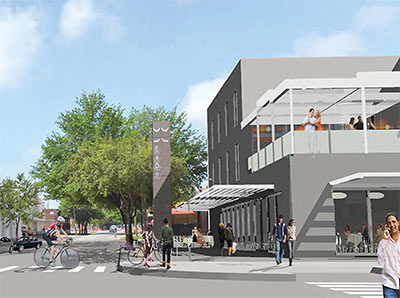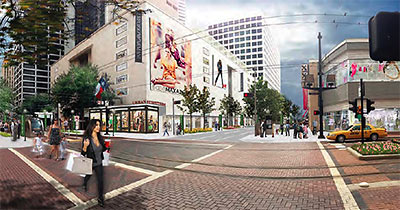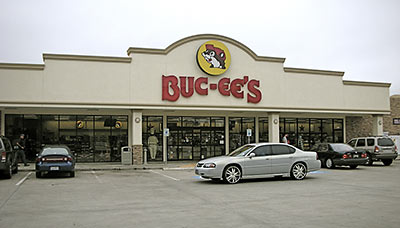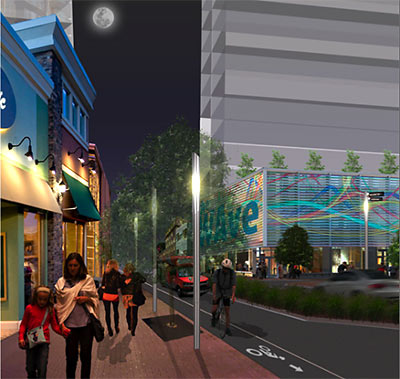HOW IT CAME TO PASS THAT HUNDREDS OF FAMILIES PURCHASED HOMES INSIDE HOUSTON’S RESERVOIRS  Many of the flooding victims upstream of Addicks and Barker dams learned for the first time that their homes were inside government-designated reservoirs only after rains from Harvey flooded their neighborhoods, reports Naomi Martin. How had they come to live there? “The corps didn’t feel the need to acquire all the land at the time the reservoirs were built, [the Army Corps of Engineers’ Richard] Long said, because that land was nothing but rice farms and fields where cattle grazed. It didn’t stay that way. In 1997, developers came before Fort Bend County government for approval to put subdivisions on the pastures. Aware of the flood risk to the area, the county was in a bind. It didn’t have the authority to prohibit development or establish zoning rules, said County Judge Robert Hebert, who has been in office since 2003. So the county insisted, ‘over great objection’ by developers, on including a warning on the plat, Hebert said. The county, he said, ‘felt it was a defect on the land that should be pointed out.'” The warning appeared as a small note on the plat document establishing some later Fort Bend County subdivisions, but equivalent declarations were absent on documents establishing nearby Harris County subdivisions. [Dallas Morning News] Aerial view of flooding in Canyon Gate, Cinco Ranch: Michael Fry
Many of the flooding victims upstream of Addicks and Barker dams learned for the first time that their homes were inside government-designated reservoirs only after rains from Harvey flooded their neighborhoods, reports Naomi Martin. How had they come to live there? “The corps didn’t feel the need to acquire all the land at the time the reservoirs were built, [the Army Corps of Engineers’ Richard] Long said, because that land was nothing but rice farms and fields where cattle grazed. It didn’t stay that way. In 1997, developers came before Fort Bend County government for approval to put subdivisions on the pastures. Aware of the flood risk to the area, the county was in a bind. It didn’t have the authority to prohibit development or establish zoning rules, said County Judge Robert Hebert, who has been in office since 2003. So the county insisted, ‘over great objection’ by developers, on including a warning on the plat, Hebert said. The county, he said, ‘felt it was a defect on the land that should be pointed out.'” The warning appeared as a small note on the plat document establishing some later Fort Bend County subdivisions, but equivalent declarations were absent on documents establishing nearby Harris County subdivisions. [Dallas Morning News] Aerial view of flooding in Canyon Gate, Cinco Ranch: Michael Fry
Development Strategies

Other apartment developers have been rushing to complete their latest construction projects. But not Camden Property Trust. Not only has the company put 2 Downtown projects on hold, CEO Ric Campo tells the Houston Business Journal‘s Paul Takahashi, it’s also dawdling as best it can on its planned 8-story, 315-unit apartment complex on the Midtown Superblock.
Writes Takahashi: “Camden has deliberately slowed work on Camden McGowen Station in hopes that construction costs will come down, Campo said. Camden plans to begin vertical construction on the apartment this fall, he said. ‘We’re going really slow on our buyout on the job,’ Campo said. ‘Hopefully we’ll be in a favorable pricing later this fall.’”
- Amid low oil prices, Camden puts brakes on Houston’s multifamily market [Houston Business Journal]
- Previously on Swamplot: Can’t Get Enough Midtown Superblock? New Video Captures Every Puddle, Blade of Grass, Mud Patch
Photo of Midtown Superblock, between Main and Travis, south of McGowen: Adam Brackman
COMMENT OF THE DAY: DON’T LET THE LOCALS GET IN THE WAY OF YOUR PROJECT  “Good idea, let the Peasants with Pitchforks have an Illusion of Choice. Let them pretend to participate, let them vent some hot air, and then throw them a bone to the side so while they bark over that, you build what you were going to build in the first place. Don’t forget, they don’t have any legal standing in this matter, they’re merely a construction nuisance like graffiti or defecating raccoons, just to be handled as a normal course of business.” [commonsense, commenting on A New Sign of Future Development Appears on Heights Hike-and-Bike Trail Site] Illustration: Lulu
“Good idea, let the Peasants with Pitchforks have an Illusion of Choice. Let them pretend to participate, let them vent some hot air, and then throw them a bone to the side so while they bark over that, you build what you were going to build in the first place. Don’t forget, they don’t have any legal standing in this matter, they’re merely a construction nuisance like graffiti or defecating raccoons, just to be handled as a normal course of business.” [commonsense, commenting on A New Sign of Future Development Appears on Heights Hike-and-Bike Trail Site] Illustration: Lulu
COMMENT OF THE DAY: ISN’T NEARBY RETAIL ENOUGH?  “I don’t understand the ground floor retail ‘litmus test’ that is applied to every new building proposed for downtown/midtown. That is, it is not a ‘good’ building if it does not have a retail component. I understand the desirability of having nearby retail and a more ‘walkable’ downtown, but why do we have to have retail in the same building as the apartments as long as the retail is nearby? Here, there is retail right across the street, and the Main street corridor is only a few blocks away! Doesn’t it make sense sometimes to build a single-use building that is more conducive to its purpose as long as the other elements of a ‘walkable’ city (like retail, offices, services) are within walking distance?” [SH, commenting on The Best Views Yet of Hines’s Market Square Apartment Tower and Its Downtown Headlight] Illustration: Lulu
“I don’t understand the ground floor retail ‘litmus test’ that is applied to every new building proposed for downtown/midtown. That is, it is not a ‘good’ building if it does not have a retail component. I understand the desirability of having nearby retail and a more ‘walkable’ downtown, but why do we have to have retail in the same building as the apartments as long as the retail is nearby? Here, there is retail right across the street, and the Main street corridor is only a few blocks away! Doesn’t it make sense sometimes to build a single-use building that is more conducive to its purpose as long as the other elements of a ‘walkable’ city (like retail, offices, services) are within walking distance?” [SH, commenting on The Best Views Yet of Hines’s Market Square Apartment Tower and Its Downtown Headlight] Illustration: Lulu
 The city has extracted $225,000 from the owners and contractors of a Bellaire developer who extracted two 100-year-old Live Oak trees from public property adjacent to 2 separate Inner Loop redevelopment sites over the summer. That’s a little less than half of the amount the city originally sought. The settlement ends the lawsuit it filed in October against Signature City Homes owner Barry Gomel and the demo contractor he hired to remove the 36-inch-diameter specimen pictured above at 1704 Blodgett St. (the home was torn down in July); it’ll also allow the developer to proceed with construction of the 4-townhome development it had planned for that location. The second tree was next to a bungalow Signature demolished at 801 Bomar.
The city has extracted $225,000 from the owners and contractors of a Bellaire developer who extracted two 100-year-old Live Oak trees from public property adjacent to 2 separate Inner Loop redevelopment sites over the summer. That’s a little less than half of the amount the city originally sought. The settlement ends the lawsuit it filed in October against Signature City Homes owner Barry Gomel and the demo contractor he hired to remove the 36-inch-diameter specimen pictured above at 1704 Blodgett St. (the home was torn down in July); it’ll also allow the developer to proceed with construction of the 4-townhome development it had planned for that location. The second tree was next to a bungalow Signature demolished at 801 Bomar.
- City of Houston Secures Payment from Developer Who Cut Down Two Protected Trees [City of Houston]
- Previously on Swamplot: The Costly Cut Tree on Blodgett St., Crushing an Old One for 4 New Ones on a Museum Park Corner
Photo: Allyn West
COMMENT OF THE DAY: READING BETWEEN THE LINES OF A LEASES-NOT-UP-YET STORY  “Translation: current tenants have murderously cheap rents and would not leave for a million bucks. Buyer is trying to play hard ball by threatening to let the property sit until the leases are up unless tenants take a crappy buyout offer.
Prediction: Buyer will eventually pay what it takes to get tenants out once they realize that no one will want to pay market rate to be in that old dog of a strip mall.” [Old School, commenting on Apartments and Retail for Westheimer and Montrose Corner? Not Until Half Price Books and Spec’s Scoot] Illustration: Lulu
“Translation: current tenants have murderously cheap rents and would not leave for a million bucks. Buyer is trying to play hard ball by threatening to let the property sit until the leases are up unless tenants take a crappy buyout offer.
Prediction: Buyer will eventually pay what it takes to get tenants out once they realize that no one will want to pay market rate to be in that old dog of a strip mall.” [Old School, commenting on Apartments and Retail for Westheimer and Montrose Corner? Not Until Half Price Books and Spec’s Scoot] Illustration: Lulu
COMMENT OF THE DAY: THE DILUTED CENTER CITY  “. . . Maybe Houston’s growth seems slower . . . compared to other similar sized cities because Houston is almost unique in that our growth spreads out radially from the downtown core. There’s not a socially defined ‘good’ side of town where 98% of development takes place. In Atlanta, most of the growth is north, with a little bit to the east. In Dallas, the only ‘right’ place to live is north. LA favors its Westside, and most of the high dollar real estate in Chicago marches north up the Lakefront. Houston has long had a bias toward the west side of town, but the Museum District/Med Center to the south has grown, EaDo is moving ahead, and The Heights and The Woodlands are doing just fine. So instead of concentrating the development dollars in only one favored area of the city, growth here happens in all quadrants.” [ShadyHeightster, commenting on Stadium-Side Apartments in EaDo a No-Go] Illustration: Lulu
“. . . Maybe Houston’s growth seems slower . . . compared to other similar sized cities because Houston is almost unique in that our growth spreads out radially from the downtown core. There’s not a socially defined ‘good’ side of town where 98% of development takes place. In Atlanta, most of the growth is north, with a little bit to the east. In Dallas, the only ‘right’ place to live is north. LA favors its Westside, and most of the high dollar real estate in Chicago marches north up the Lakefront. Houston has long had a bias toward the west side of town, but the Museum District/Med Center to the south has grown, EaDo is moving ahead, and The Heights and The Woodlands are doing just fine. So instead of concentrating the development dollars in only one favored area of the city, growth here happens in all quadrants.” [ShadyHeightster, commenting on Stadium-Side Apartments in EaDo a No-Go] Illustration: Lulu

Here are some drawings of an apartment building that appears to be aimed for an empty lot in East Downtown. As drawn, the concept shows the 216-unit EaDo Place standing on the block bound by Bell, Clay, Chartres, and St. Emanuel — that’s right beside the former Meridian Club, where the food trucks idle and generators hum at the Houston Food Park. And it’s just 2 blocks from Bastrop St., where that pedestrian promenade leading to BBVA Compass Stadium is to be put into place. If built, the apartments would stand at 2616 Clay, just on the other side of the Southwest Fwy. from the George R. Brown Convention Center, and would top off some ground-floor retail, with a 30,938-sq.-ft. grocery store facing Bell and St. Emanuel.

Now have at it: SmartGeometrics has made available for free on a website launched yesterday the data from 3D scans of the allegedly leaky, 87,500-sq.-ft. 1927 underground water reservoir near Sabine St. along Buffalo Bayou. Though the Buffalo Bayou Partnership would like to do something cool with the “accidental cathedral,” as Houston Chronicle columnist and cistern sympathizer Lisa Gray has called it, there’s no more funding available. Thus, the partnership is hoping some smart cookie who knows her way around AutoCAD (and programs like it) will use this free data to come up with an idea that woos someone or something else — like, say, Bud Light — to pay to make it happen.
- Buffalo Bayou Park’s Cistern 3D Data [SmartGeometrics]
- Previously on Swamplot: Flying Underground: Buffalo Bayou’s Abandoned Basement Skeleton in Creepy 3D!, Using Pictures To Picture Uses for Buffalo Bayou’s Basement, Introducing the Bud Light Amphitheater, the Next Greenspace To Grace Buffalo Bayou, Poking Around in Buffalo Bayou’s Abandoned Basement
Image: Buffalo Bayou Park

That retail task force that Mayor Parker put together about the same time that Macy’s announced it was closing the Downtown store came through with its first report yesterday, recommending that Dallas St. between Milam and La Branch — or between the hotels on the west side of Downtown and the hotels, Discovery Green, and George R. Brown Convention Center on the east — be prettied up into a kind of retail promenade. And the task force recommends that it happen sooner rather than later, in time to capitalize on the disposable incomes of the hordes coming to town for the NCAA Final Four in 2016 and the Super Bowl in 2017.
The rendering above, included in the report, shows a Kardashian body double strolling through the intersection of Main St. and Dallas; the Sakowitz building, catty-corner across from the to-be-demolished-in-a-week Macy’s, would pair with GreenStreet to anchor the linear district and provide similar photo opportunities. It appears that the task force hopes to lure national retailers and rally existing tenants and landowers, like Hilcorp, to the cause with tax breaks and other incentives, including waiving the city ordinance requiring that signage Downtown be no taller than 42.5 ft.
COMMENT OF THE DAY: HOUSTON’S MASTER PLANNERS  “. . . I’ve talked a lot about the bad way some developers approach growth in Houston. But neighborhoods are addressing it wrong, too. They’re too reactionary. They sit around doing nothing until a developer proposes something they don’t like, then they mobilize to try to kill it. They need to ask themselves ‘what do we really want in and around our neighborhood,’ and then create master plans to communicate it. (The master plans wouldn’t be enforced — that would be zoning — but they could be used by developers to get a sense of what the neighbors would oppose.)
The Super Neighborhoods were supposed to be a venue where this could happen — they were originally under the auspices of the Houston Planning Department. But I’ve found that it’s actually the Management Districts that are doing master plans. It’s great that they’re happening, but Management Districts are paid for by and primarily serve businesses; and single family neighborhoods aren’t even trying to get in on the efforts.” [ZAW, commenting on Dogging the Morrison Heights Midrise with Doggerel] Illustration: Lulu
“. . . I’ve talked a lot about the bad way some developers approach growth in Houston. But neighborhoods are addressing it wrong, too. They’re too reactionary. They sit around doing nothing until a developer proposes something they don’t like, then they mobilize to try to kill it. They need to ask themselves ‘what do we really want in and around our neighborhood,’ and then create master plans to communicate it. (The master plans wouldn’t be enforced — that would be zoning — but they could be used by developers to get a sense of what the neighbors would oppose.)
The Super Neighborhoods were supposed to be a venue where this could happen — they were originally under the auspices of the Houston Planning Department. But I’ve found that it’s actually the Management Districts that are doing master plans. It’s great that they’re happening, but Management Districts are paid for by and primarily serve businesses; and single family neighborhoods aren’t even trying to get in on the efforts.” [ZAW, commenting on Dogging the Morrison Heights Midrise with Doggerel] Illustration: Lulu
COMMENT OF THE DAY RUNNER-UP: HOW AND WHERE HOUSTON’S GONNA FIT ALL THOSE NEWCOMERS  “More density is coming to the Heights and every other Inner Loop neighborhood, because the economic factors at work are unstoppable. Barring a disaster wrecking Houston (natural or otherwise) or an economic crash, more people are coming, and lots of them will want to live near the central parts of the city. All we’re debating is how that will happen. Will needed infrastructure improvements happen? Will there be better transit? Will the density be added in a way to preserves the original neighborhood, and what does that look like?
I have no problem with this kind of development along Yale or Studewood. I think an ideal outcome is main streets with good transit access and dense housing, retail, etc. with historically significant neighborhoods preserved nearby. I think what Arlington County, VA has done along these lines stands as an excellent example.
And the idea that renters bring a neighborhood down is just stupid. unless your idea of a dynamic Heights is one where the average age is 50.” [John (another one), commenting on A Second Midrise Alexan Planned Right Beside the First One on Yale] Illustration: Lulu
“More density is coming to the Heights and every other Inner Loop neighborhood, because the economic factors at work are unstoppable. Barring a disaster wrecking Houston (natural or otherwise) or an economic crash, more people are coming, and lots of them will want to live near the central parts of the city. All we’re debating is how that will happen. Will needed infrastructure improvements happen? Will there be better transit? Will the density be added in a way to preserves the original neighborhood, and what does that look like?
I have no problem with this kind of development along Yale or Studewood. I think an ideal outcome is main streets with good transit access and dense housing, retail, etc. with historically significant neighborhoods preserved nearby. I think what Arlington County, VA has done along these lines stands as an excellent example.
And the idea that renters bring a neighborhood down is just stupid. unless your idea of a dynamic Heights is one where the average age is 50.” [John (another one), commenting on A Second Midrise Alexan Planned Right Beside the First One on Yale] Illustration: Lulu

Here come more billboard double entendres: The Baytown Sun reports that Buc-ee’s is building a big ’un on the I-10 feeder and John Martin Rd. later this year. And, apparently, the proposed 60,000-sq.-ft. convenience store, gas station, and jerky trafficker will get top billing: Part of the deal — a Chapter 380 Agreement — involves a waived height restriction for the store’s beaver beacon, so Buc-ee’s can raise one 100 ft. into the air. In return, Baytown will get a bit of room to put its own name up there too. (This will be the first time, the Sun reports, that Buc-ee’s will share its sign.) The store’s planned for about 18 acres on the southwest corner of John Martin Rd. and I-10 near the San Jacinto Mall. The Sun reports that it’s expected to open in 2014.
- Locations [Buc-ee’s]
- City of Baytown: Buc-ee’s coming to town after Council OKs deal [Baytown Sun ($)]
Photo of Lake Jackson Buc-ee’s: Judy Baxter [license]

Local planning firm Asakura Robinson has released a 250-page study on the past, present, and future — as they would like to see it — of the Washington Corridor. The study seems to stem from Better Block Houston, a kind of experiment the firm performed in a vacant lot near their mural-stained offices on Washington and Silver: The street was transformed into a pop-up plaza: Food trucks rolled in, bike repair stations set up, and local retailers spread out. The study imagines this kind of pedestrian life happening along the entire length of Washington, from Westcott to I-45 and between I-10 and Buffalo Bayou.
COMMENT OF THE DAY: BRING IT ON “As we all learned from the Ashby debacle, anyone who lives within a 2 mile radius of a proposed project has the right to go all NIMBY on it. Well, I live within a 2 mile radius of this project, and I’d like to declare myself to be a BIMBY — Build In My Backyard. I purchased inside the loop so that I could be in a dynamic urban environment; that includes high density housing options mixed in with single family; that includes the associated traffic; that includes noisy bars letting out at 2am right in the middle of neighborhoods; that includes Ferraris wailing at 120db at 7am on Sunday even if they’re only going 15mph. Bottom line, I’d love it if the Heights became more like Greenwich Village or Tribeca. While the Heights, or Montrose, aren’t likely to get there in the near future, projects like this (and Ashby) help get us just a little bit further in that direction. And I consider that to be a good thing. BIMBY!” [Walt, commenting on A Land Use Counterattack from the Yale St. Alexan Heights]

